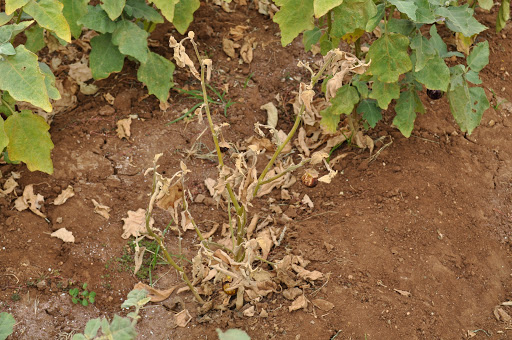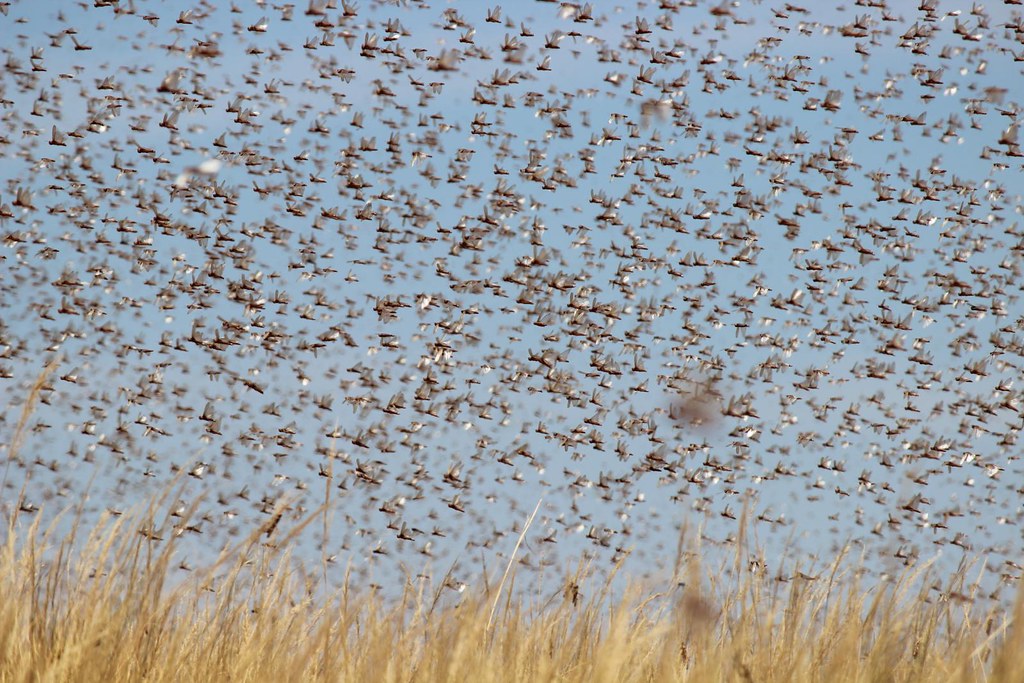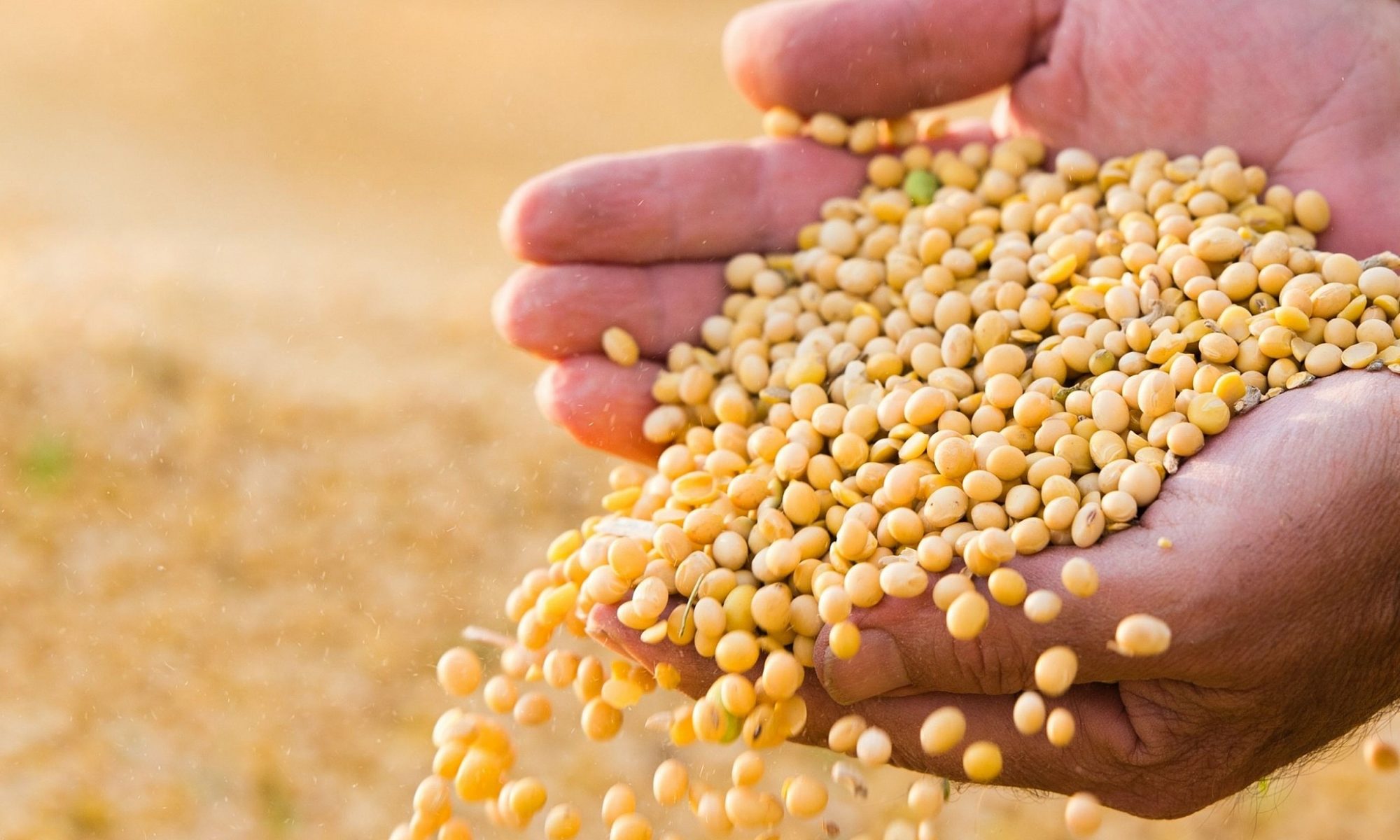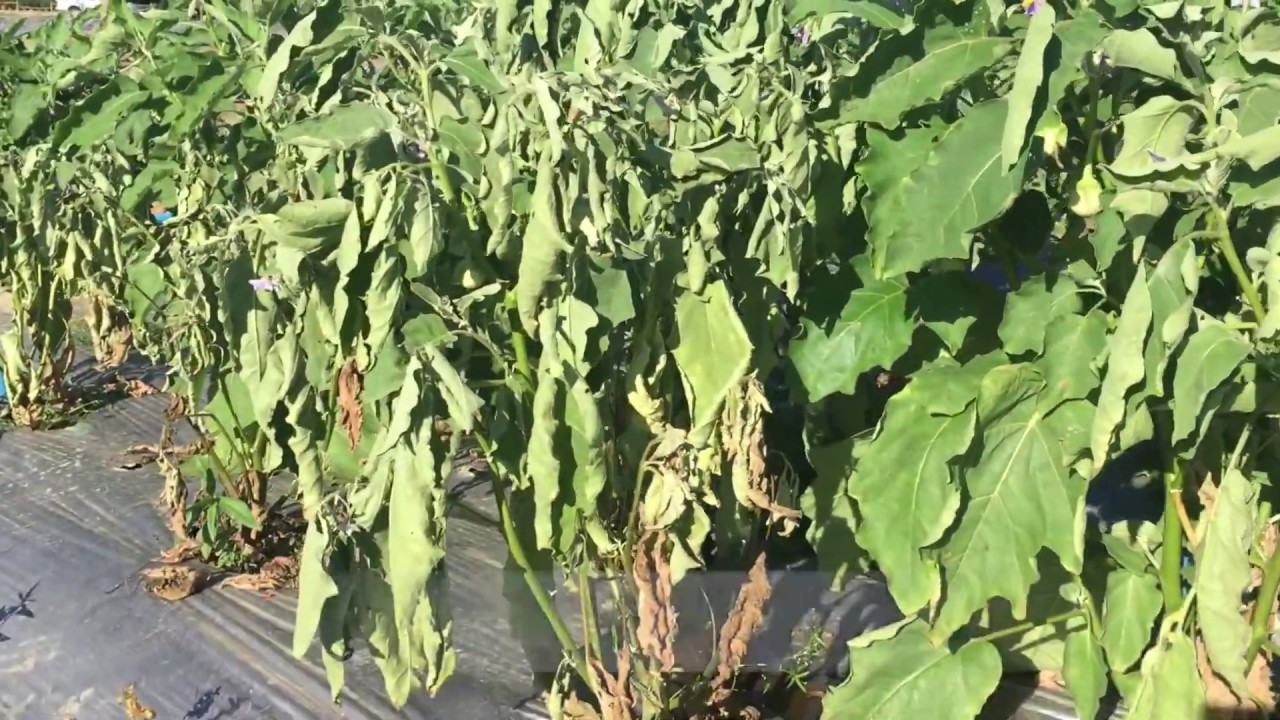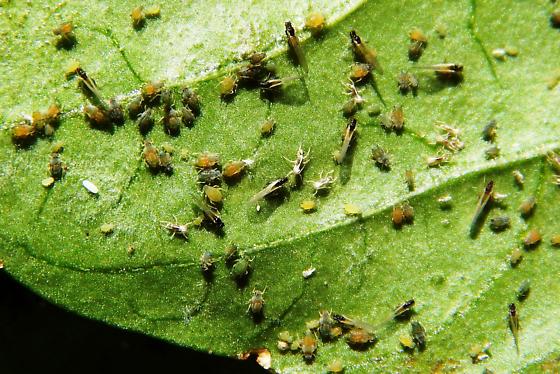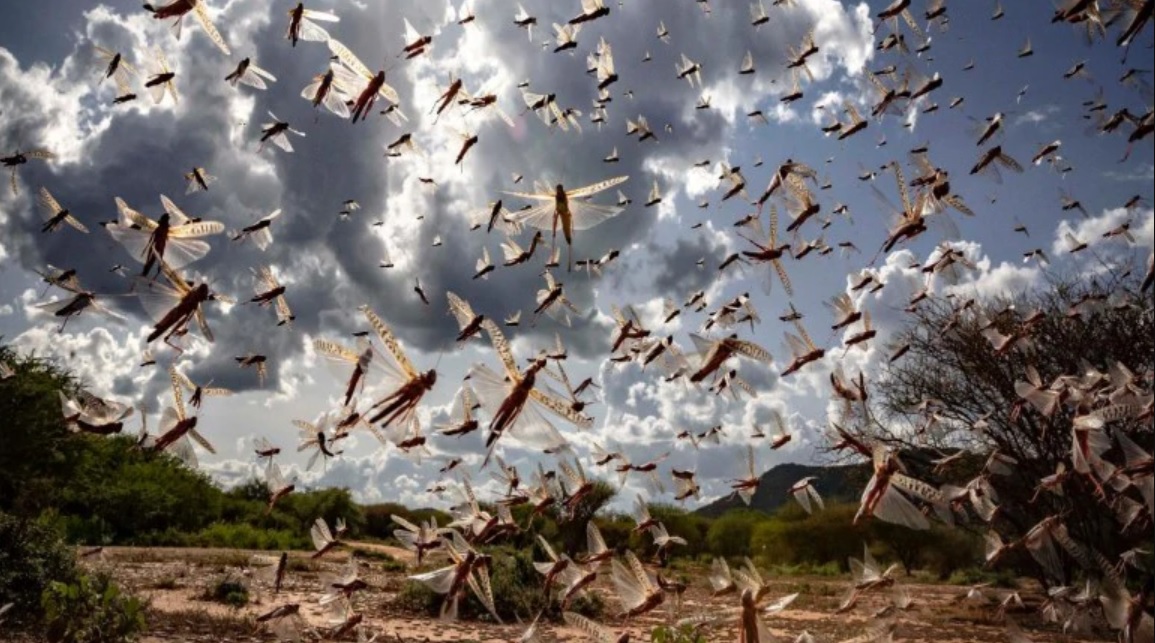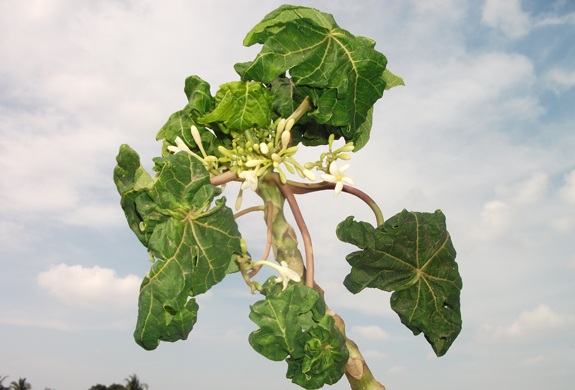- Keep fields clean, and collect infected plants and destroy them.
- This disease can be controlled by adopting crops like cauliflower, cabbage, mustard, radish in the crop cycle.
- Pant Samrat variety is tolerant to this disease.
- For prevention of this disease, Kasugamycin 5% + Copper oxychloride 45% WP @ 300 gm or Streptomycin sulfate IP 90% + tetracycline hydrochloride 10% W / W @ 20 gm or Kasugamycin 3% SL @ 300 ml per acre mixed in 200 liters of water and drenching near the roots. Or
- Drenching near plant roots by mixing Kasugamycin 5% + Copper oxychloride 45% WP @ 250 grams per acre in 200 liters of water.
Madhya Pradesh Agriculture Minister announced compensation in view of large attack of locust party
Crop’s biggest enemy locust team has knocked In many areas of Rajasthan, Madhya Pradesh, and Uttar Pradesh. Officials of the Agriculture Department say that such a big attack of locusts has occurred especially in Madhya Pradesh after 27 years. Given this large locust attack, precautionary steps are also being taken by the government.
On this issue, Agriculture Minister of Madhya Pradesh Shri Kamal Patel said that a survey of the losses caused to farmers due to the locust outbreak will be conducted. The survey work will be done by forming a joint team of staff of the Revenue Department and Agriculture Department. In this survey, the farmers who have suffered a significant loss will be compensated under RBC 6 (4). Along with this, Minister Shri Kamal Patel said that the necessary instructions for this from the state level should also be issued soon.
Source: Nai Dunia
ShareKnowledge of advanced varieties of soybean for Madhya Pradesh
- NRC-7 (Ahilya-3): This medium-term variety that ripens in about 90-99 days. Its yield is 10-12 quintals/acre. Due to the limited growth of the plants, there is convenience at the time of harvesting, and even after maturing in this variety, the fruits are not cracked, consequently, there is no loss in production. The main feature of this variety is that it is tolerant to girdle beetle and stem fly.
- NRC-12 (Ahilya-2): This medium-term variety, which is ripe in about 96-99 days. It has tolerant characteristics of girdle beetle and stem fly and is resistant to yellow mosaic disease.
- NRC-37 (Ahilya-4): This variety is prepared by cooking in 99-105 days. It has a yield capacity of 8-10 quintals/acre.
- NRC-86: This early variety ripens in 90-95 days and the yield is about 8-10 q / acre. This variety is resistant to girdle beetle and stem fly and is moderately resistant to Charcoal rot and pod blight disease.
- JS 20-34: Its yield is about 8-10 q/ acre and the medium duration variety is ripened in about 87 days. It is a resistant variety to Charcoal rot and leaf spot disease. It is suitable for low and moderate rainfall and is suitable for light to medium soils.
- JS 20-29: Its yield is about 10-12 quintals/acre, which ripen in about 90-95 days. It is resistant to the Yellow Mosaic virus and charcoal rot.
- JS 93-05: This variety of soybean is matured in 90-95 days. There are four grains in its pod. The yield potential of this variety is estimated to be 8-10 q / acre.
- JS 95-60: This early variety ripens in 80-85 days, its yield is about 8-10 q / acre. This semi-dwarf variety of pods does not crack.
Farmers’ profits will increase, preparations are being made to increase the support price of Kharif crops
During the Corona crisis, another good news is coming for the farmers. According to reports, to provide additional benefits to the farmers, the central government is now considering increasing the minimum support price of Kharif crops. If this happens, the support price of crops mainly paddy, cotton, and pulses will increase.
The Commission for Agricultural Costs and Prices (CACP) has submitted its report to the Central Government in this regard. Now this report will be placed before the Union Cabinet. If these recommendations are accepted, the farmers will get a higher price for the crop and their income will increase.
According to media reports, the CACP has recommended raising the support price of 17 Kharif crops and paddy is the most prominent among them. CACP recommends Paddy’s MSP to be increased by 2.9% to Rs 1888 per quintal. Explain that at present the MSP of paddy is Rs 1815 per quintal.
The CACP has recommended increasing the MSP of cotton by Rs 260 per quintal. Major pulses have also been recommended for increasing the MSP, including toor, urad, and moong dal. Under this, toor dal 200 rupees per quintal, urad dal 300 rupees per quintal and moong dal 146 rupees per quintal has been asked to increase.
Source: Krishi Jagran
ShareHow to identify Bacterial wilt in Brinjal crop
- In the afternoon, the plants can be seen wilting and look healthy at night, but the plants die soon.
- Rotting of plants, dwarfing, yellowing of leaves, and finally dying of the entire plant are special symptoms of this disease.
- An outbreak of this disease usually occurs in the form of flowers or fruits.
- The lower leaves dry up and fall before the plants begin to thaw.
- The color of the roots and lower part of the stem becomes dark brown.
- A white-yellow milky leak can be seen in the stem after cutting.
How to identify and protect Aphid insect in Chili crop
- Aphid is a small, soft bodied insect that can be yellow, brown or black colour.
- They usually sucking from the plant by forming colonies at the corners of small leaves and release sticky honeydew, which increases the chances of fungal diseases.
- Leaves and twigs may wither or become yellow due to severe infection.
- To protect against Aphid pests, spray 100 gram Thiamethoxam 25 WG or 100 ml Imidacloprid 17.8% SL with 200 liters of water per acre.
- Use Beauveria bassiana 1 kg per acre by biological means or can also be used in combination with the above pesticide.
After 27 years in MP, large locust attack, Threat on Moong crop of 8000 crores
Crop’s biggest enemy locust team has knocked strongly in Madhya Pradesh after many years. Officials of the Department of Agriculture say that such a large attack of locusts has occurred in Madhya Pradesh after 27 years. Not only this, but the attack is also expected to continue till the monsoon.
These locust teams, which have entered Rajasthan from Pakistan and Madhya Pradesh from Rajasthan, have spread to many areas of Madhya Pradesh via Malwa Nimar. To avoid this, farmers are using drums, thali, crackers, and sprays so that these teams run away.
According to agricultural experts, if this problem is not controlled in time, it may ruin the mung bean crop of Rs 8000 crore. Not only this, the risk of cotton and chilli crop has also remained.
However, to avoid this problem, farmers should form groups at their level at night and monitor the fields as locust teams sit in the fields to rest at 7 to 9 pm and cause great damage to the crop overnight.
Source: NDTV
ShareHow to control leaf curl, know its cause in Papaya crop
- This leaf curl disease is caused by the virus and the spread of this disease is done by the vector whitefly.
- This whitefly also acquires viruses while sucking the leaves and transmits the viruses in them while sucking with healthy leaves.
- To control this, Diafenthiuron 50% WP @ 15 grams per 15 liters of water dissolving and spray on the leaves. Or
- Spray on leaves Pyriproxyfen 10% + Bifenthrin 10% EC @ 15 ml or Acetamiprid 20% SP @ 8 gm on dissolving in 15 liters of water.
Know the cause and identity of leaf curl disease in Papaya crop
- Symptoms of leaf curl appear only on the leaves. affected leaves become small and corrugated.
- Deformity of leaves and yellowing of veins are common symptoms of the disease.
- Affected leaves turn downwards and as a result they appear to be inverted cups, which is a special symptom of leaf curl.
- The leaves become thick, brittle and rough on the upper surface due to overgrowth. Flowering occurs less in diseased plants. In the severity of the disease, the leaves fall and the plant stops growing.
Apart from 6000 rupees, do you know these big benefits from the PM Kisan Scheme?
We all know that under the Pradhan Mantri Kisan Samman Nidhi Yojana, farmers are given Rs 6,000 annually in three installments of 2000-2000 rupees. But perhaps you will not know that after joining this scheme, farmers get some more benefits very easily.
The farmers associated with PM Kisan Yojana also get Kisan Credit Cards very easily. In fact, now the Kisan Credit Card has also been added to the PM Kisan Scheme.
Apart from this, the farmers associated with the PM Kisan Yojana also get the benefit of the pension scheme easily. It is worth mentioning that the name of the pension scheme is PM Kisan Mandhan Yojana, for which usually a lot of documents are required. But if you are associated with the PM Kisan Scheme then you will not need any document to avail pension scheme.
Source: Zee Business
Share
